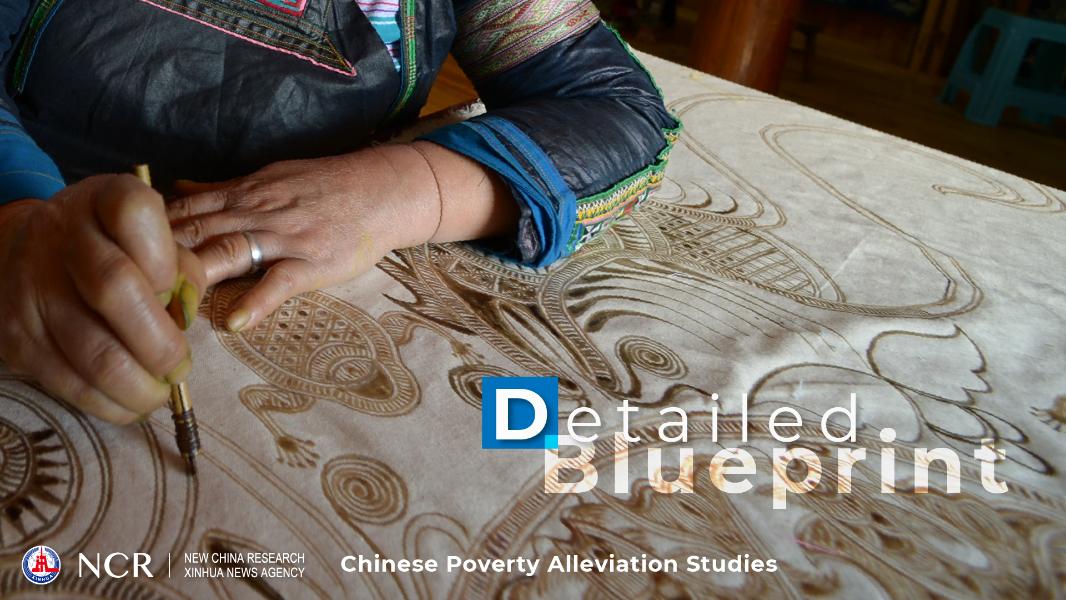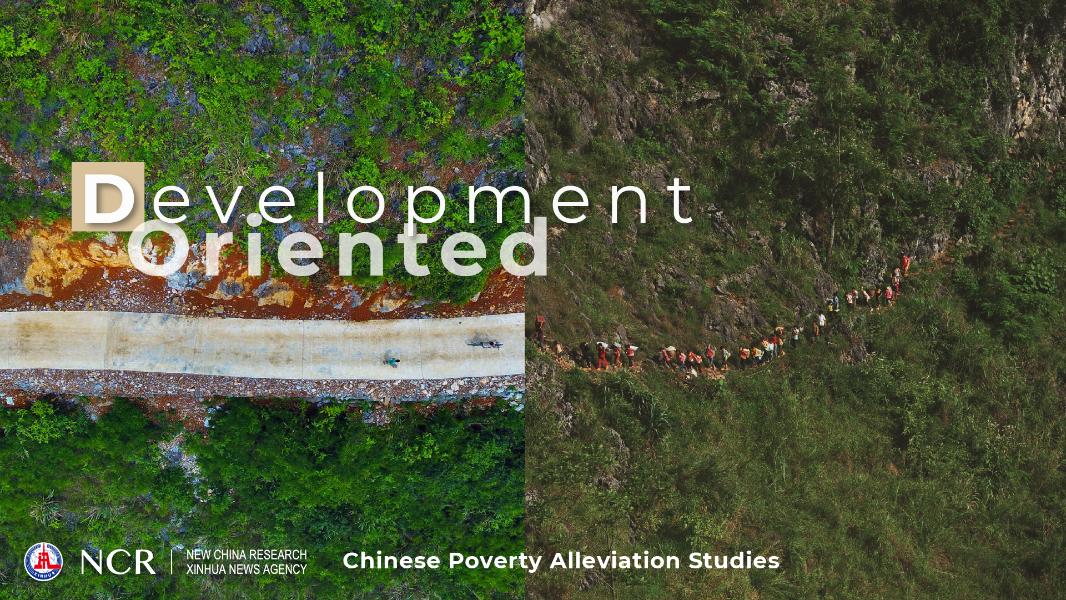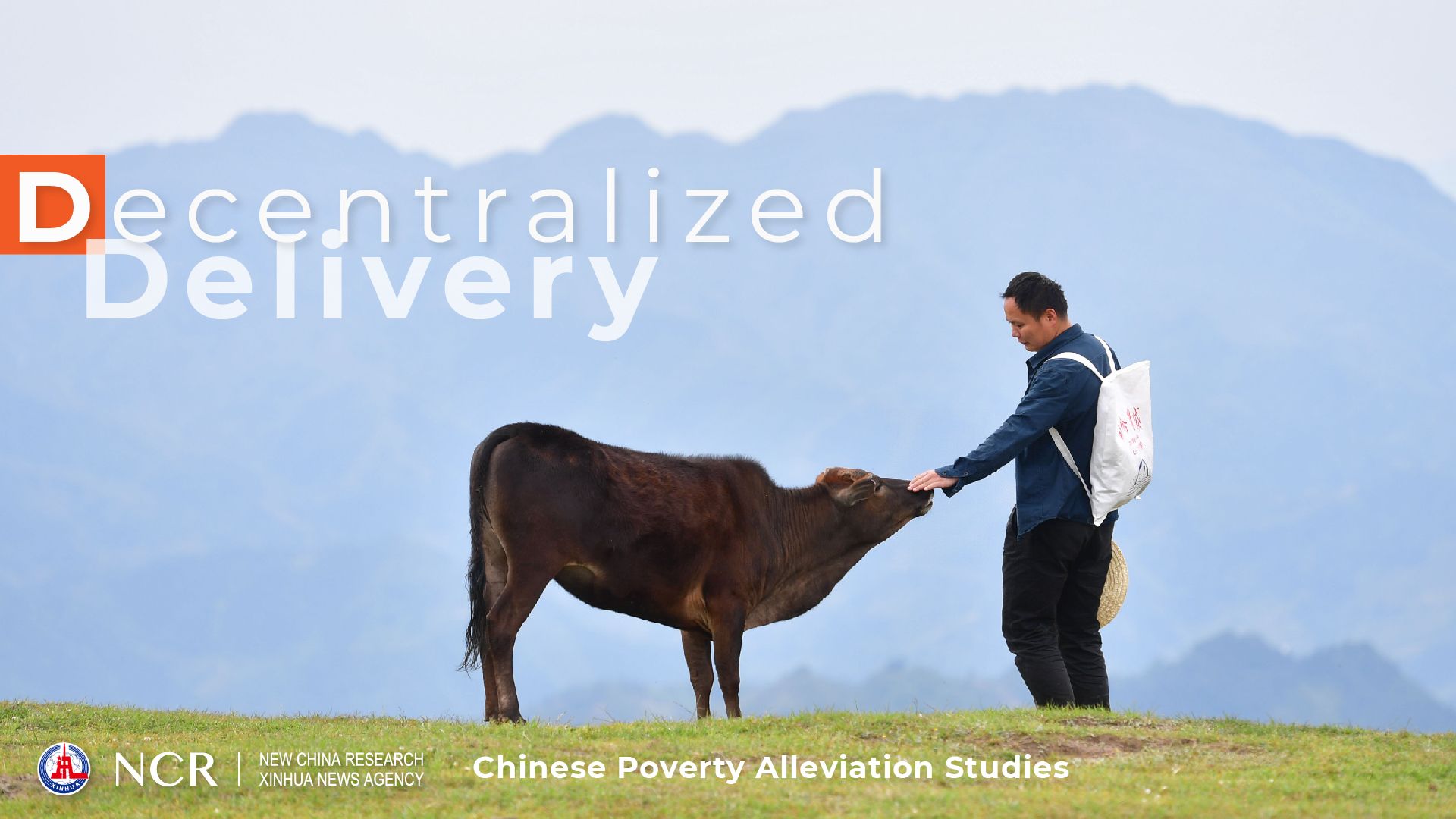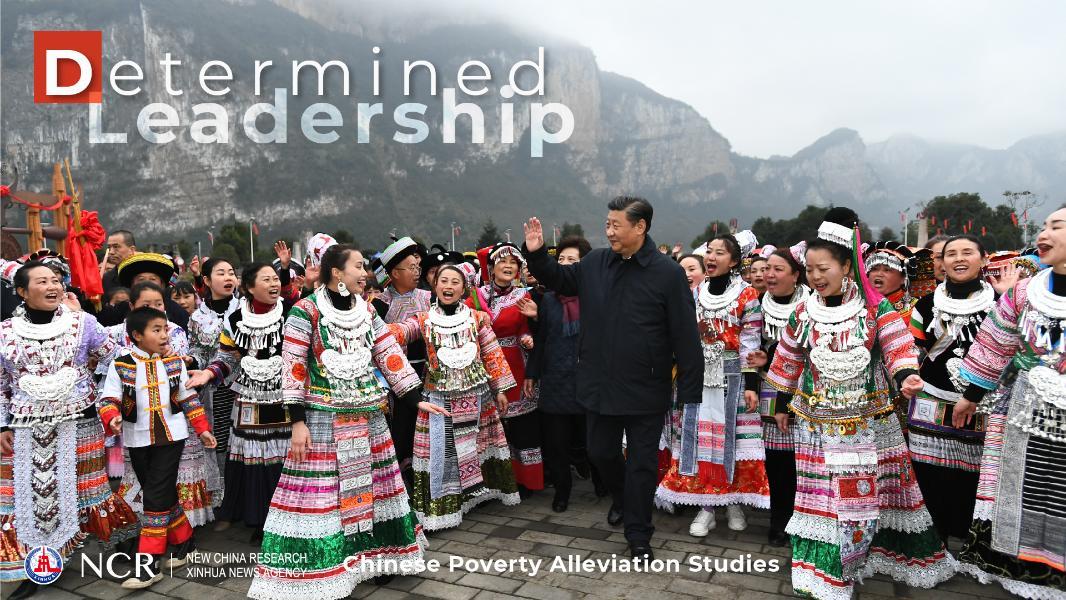BEIJING, Feb. 28 (Xinhua) -- While China's national conditions, political system, cultural traditions and values have their own unique features, China's experience in ending deprivation is also of global significance.
A report released Sunday by New China Research, the think tank of Xinhua, encapsulated what the world may learn from China's poverty relief efforts as "5Ds."

DETERMINED LEADERSHIP
Political economy theory shows that when a particular task becomes the top priority of a country's top leader and is continuously implemented (the "nail" spirit), it creates a strong national will and drives allocation of resources, according to the report titled "Chinese Poverty Alleviation Studies: A Political Economy Perspective."
The objective is noble because it is people-centered and confronts the issues of social inequality and efficiency for the overall well-being of the country and society.
With more than 90 million members, the Communist Party of China (CPC) is the world's largest political party. "There is no doubt that poverty alleviation is a vivid manifestation of the leadership of the CPC," the report noted.

DETAILED BLUEPRINT
China is adept at strategic planning, and also focused on medium-term and short-term goals, such as the "two centenary" strategic goals, the "Five-Year Plans" and the annual Central Economic Work Conference.
The blueprint design, formed on the basis of in-depth study and an understanding of domestic and international issues and trends, helps all sectors of society form stable expectations of the future, the report noted.
With the common goal of eradicating absolute poverty, several generations of Chinese leaderships have led the nation in successive struggles, which ensured policy continuity and spurred the entire country to work together toward a unified goal, according to the report.

DEVELOPMENT ORIENTED
Translating economic growth into poverty alleviation is no doubt complicated. Even more complicated is translating economic growth into policies that are more widely shared or effectively target the poor.
China has combined economic development with proactive precise poverty reduction, effectively offsetting the declining "trickle-down" effect of economic growth.
In recent years, China has adopted a strategy of transforming its economy from one defined by high-speed growth to one centered on high-quality development. "This economic transformation will undoubtedly have a tremendous impact on the future of poverty alleviation in China," the report noted.

DATA-BASED GOVERNANCE
Precise poverty alleviation requires precise data. In the fight against poverty, the Chinese government has attached particular importance to the development of big data and the digital economy and emphasized the application of advanced digital management, which made China's poverty alleviation success possible in a relatively short period of time.
China's national poverty alleviation data system, established in 2014, included information on 128,000 poor villages, 29.48 million poor households and 89.62 million poor people, and has since been dynamically adjusted.

DECENTRALIZED DELIVERY
Poverty alleviation, especially the "last mile" of eradicating absolute poverty, cannot be achieved without proper execution.
The effective implementation of China's poverty alleviation policies is also due to the "decentralized" nature of the country's governance structure, featuring many improvisations at subnational levels to implement national policies, according to the report.




 A single purchase
A single purchase









